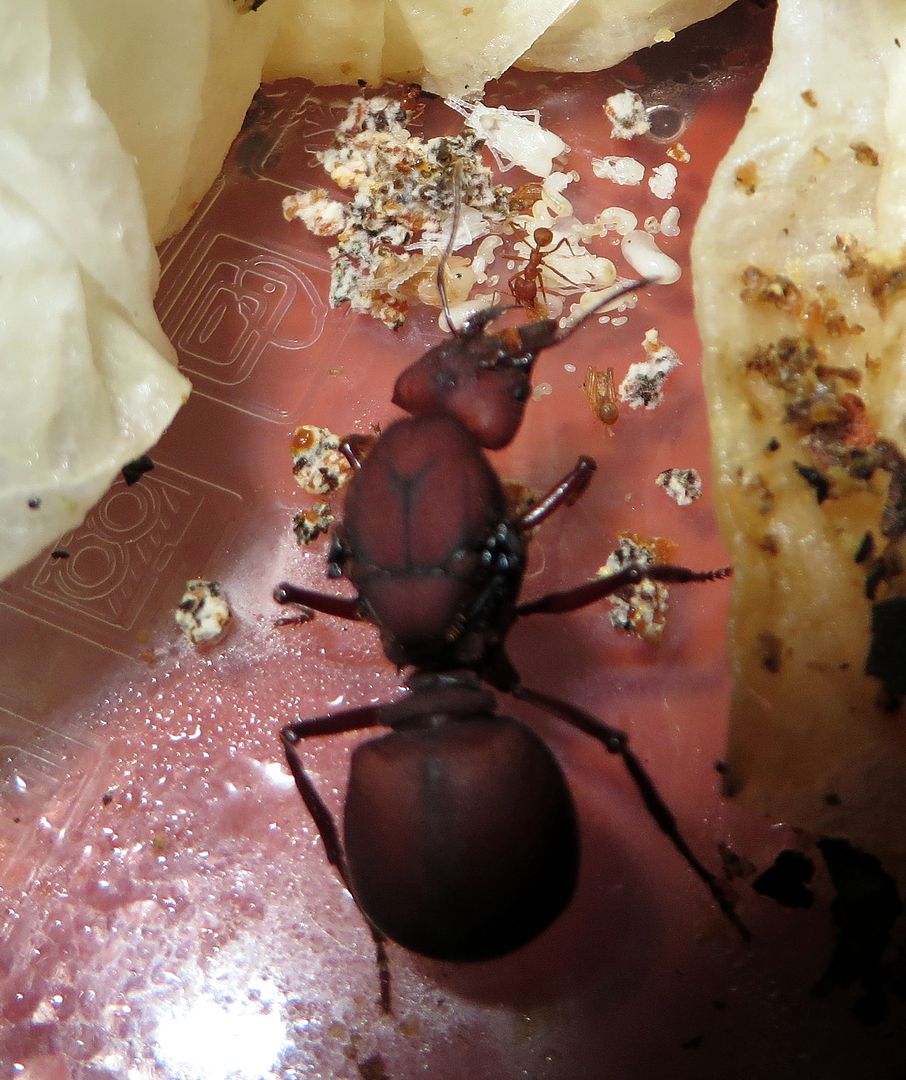Passing Fungus around.
- Antkit
- Pupa
- Posts: 62
- Joined: Fri Dec 04, 2015 9:05 pm
Passing Fungus around.
Apologies if this has been asked before. Most of my Acromyrmex octospinosus colonies are doing really well except for one, which didnt appear to have any fungus, so I pinched a small amount from another colony. A week later is was still ticking over lovely with ants all over it.
So, I got a few Atta cephalotes colonies, much smaller with just a few workers, very hard to tell if the fungus growth was just very young or struggling and failing, Now there was a few concerns about if the fungus from a different species would be accept, due to if there was an odor difference or if it was the same species of fungus (Remember this is a very new part of the hobby for me). What if there was something on the fungus that this species of ant had no immune of defense to that the other Genus just took for granted. Well I tried with just one of the Atta colonies and it seems to be going ok. Any problems do you think adding some of the Acromymex to my other Atta colonies?
So, I got a few Atta cephalotes colonies, much smaller with just a few workers, very hard to tell if the fungus growth was just very young or struggling and failing, Now there was a few concerns about if the fungus from a different species would be accept, due to if there was an odor difference or if it was the same species of fungus (Remember this is a very new part of the hobby for me). What if there was something on the fungus that this species of ant had no immune of defense to that the other Genus just took for granted. Well I tried with just one of the Atta colonies and it seems to be going ok. Any problems do you think adding some of the Acromymex to my other Atta colonies?

Contact me at ant.enquiries@antkit.uk | All our ants are inspected and certificated at border control.
-
Formica123
- Sub-Major
- Posts: 596
- Joined: Thu Dec 03, 2015 3:59 pm
- Location: England
- Contact:
Re: Passing Fungus around.
No problems at all, there's a thread I made about the conversion of atta fungus to acromyrmex and vice versa. Just make sure there are no workers on the fungus
I keep over 20 species of ant, inc. Acromyrmex Octospinosus
Owner of AntKeepingShop (www.antkeepingshop.weebly.com)
Owner of AntKeepingShop (www.antkeepingshop.weebly.com)
- Antkit
- Pupa
- Posts: 62
- Joined: Fri Dec 04, 2015 9:05 pm
Re: Passing Fungus around.
Thank you very much Formca.

Contact me at ant.enquiries@antkit.uk | All our ants are inspected and certificated at border control.
- Acromyrmexbob
- Site Admin
- Posts: 2199
- Joined: Tue Nov 24, 2015 10:32 pm
Re: Passing Fungus around.
Jon, tread carefully here. Marco tried to do this and after a promising start everything went wrong. Not sure if it was down to any factors other than rejection by the ants but this is a field we need to tread carefully in until we know more answers. I am planning on setting up some trials and seeing if there are any obvious steps or precautions but thats for another time. You should keep us up to date with how things go. Is it the Atta cephalotes you told me about or from another source. Be really interested in hearing whether you manage to get these colonies to grow.
Keep us up to date, Jon.
Keep us up to date, Jon.
- Antkit
- Pupa
- Posts: 62
- Joined: Fri Dec 04, 2015 9:05 pm
Re: Passing Fungus around.

This is the fungus I added. To myself it doesnt appear to be very much, however it was almost 90% more than she originally had. My thought was if I added a great big piece she may struggle to maintain it. Should I add more than this?

Contact me at ant.enquiries@antkit.uk | All our ants are inspected and certificated at border control.
- Antkit
- Pupa
- Posts: 62
- Joined: Fri Dec 04, 2015 9:05 pm
Re: Passing Fungus around.
What quantity of fungus should I expect a colony of this size have? Am I flapping too much and this is perfectly normal?

Contact me at ant.enquiries@antkit.uk | All our ants are inspected and certificated at border control.
- Leafcutter
- Minim
- Posts: 256
- Joined: Fri Nov 27, 2015 4:12 pm
Re: Passing Fungus around.
That quantity of fungus seems reasonable for a small colony with less than 10 workers, which is what I can see from the picture.Antkit wrote:What quantity of fungus should I expect a colony of this size have? Am I flapping too much and this is perfectly normal?
Atta cephalotes (2019)
Camponotus detritus (2018)
Camponotus maculatus (2018)